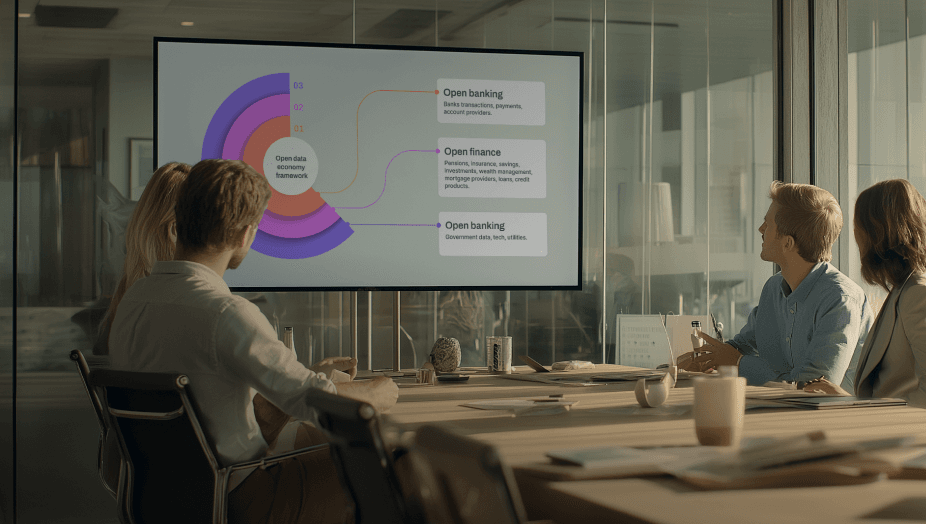
Open banking isn't just about payments—it offers much more. It’s a game-changer for credit assessment, helping lenders streamline operations and achieve more accurate results in risk evaluation. Consumers benefit too, with no need for endless document submissions.
In this article, we compare open banking credit scoring with traditional methods, highlighting key differences and advantages. Discover how your lending company can leverage open banking for better outcomes.
Traditional Credit Scoring
Credit companies, like loan providers, use credit scoring to assess the risk of an individual or business when they apply for credit. It's a method to predict likely repayment behavior of a borrower and decide whether to give them a loan or not.
There isn't a single 'magic' number for a credit score. Different companies have varying criteria. For instance, Experian offers a score range from 0-999, considering a 'good' score to be between 881 and 960, while 'fair' or average falls between 721 and 880.
Predictive models used by credit companies are largely based on three categories of data:
- Demographic Information about the customer
- Their relationship with the bank and behavioral data such as accounts held, balances, missed payments
- External credit bureau data such as electoral roll, other borrowing, payment history, and public information
What Is Open Banking Data?
Open banking data, as the term implies, refers to customer information that banks share via application programming interfaces (APIs) with authorised third-party providers. This happens within the open banking framework and is regulated in Europe via PSD2, which will soon become PSD3. Customers must provide consent to the data sharing and they can revoke it whenever needed.
How Does Data Sharing Work?
Banks share data via read-only APIs. These are instructions and protocols that serve as a communication bridge between different software systems. The API sharing practice is much safer than screen scraping, which can be susceptible to data breaches and cyber attacks.
The API specifications are regulated and set by PSD2. The API standard is universal across the region and banks must follow it. Security requirements are also included. For instance, in Europe, open banking must legally adhere to strong customer authentication (SCA), which is a form of multi-factor authentication (MFA).
What Types of Data Are Shared?
The information collected via open banking may vary based on the jurisdiction. Still, the most typical open banking data points are:
- Account holder data such as name and surname
- Personal code or company code
- Residential or location address
- Merchant category or activity codes
- Financial liabilities; deposits and securities
- Transaction data and history
In some cases, extra details, such as employment status or employer, may be gathered. However, this is subject to local regulations.
Unlike traditional credit scoring factors, this data provides a more up-to-date and complete view of how individuals and small businesses manage their finances. It’s akin to sharing the last 12 (or more) months of paper bank statements in digital form.
Open Banking Credit Check Explained
| Traditional credit scoring | Open banking credit scoring | |
| Data source | Demographic data, internal bank data, and external credit bureau data | Customers’ recent transactions and bank account details shared via APIs |
| Focus | Stability criteria, historical data | Recent financial behaviour |
| Documents required | Documents are often collected from a variety of places, sometimes in paper form | All data is digitalised and collected instantly through APIs |
| Time required | From days to weeks | From seconds to minutes |
With access to open banking data, lenders can develop real-time credit scoring models based on the borrower’s recent bank transactions, allowing them to assess risk differently than traditional models.
Open banking credit check is much more behavioural. The traditional models generally value the stability criteria, while the models developed on open banking data are directly related to recent financial behaviour.
These models consider the consistency of the borrowers’ expenses, spending habits, available savings, and how the borrowers manage their account balance and overdraft. Open banking data can reveal a clearer picture than traditional credit bureaus by showing whether an applicant regularly pays bills on time or if there are irregularities like returned direct debits.
Open banking data speeds up the application process, improves risk assessment, and benefits both the borrower and the lender. Previously, traditional banks had exclusive access to this data, giving them an advantage of knowing more about the applicant without requesting additional information. Now, this data can be available to every lender through an open banking provider.
Leverage Open Banking Data for Lenders with Noda
Noda simplifies identity verification for lenders—no documents required. Our online KYC verification validates customer identities directly through their bank account with just a quick authorisation. The process takes less than 30 seconds to access the account and under five seconds to verify.
Our advanced algorithms and machine learning ensure accurate, reliable results by analysing multiple data points and cross-referencing information. Noda's solution adapts to both regulated and non-regulated markets, keeping you fully compliant. Easily request a Know Your Customer (KYC) report through our user-friendly interface or API.
Efficient, compliant, and user-friendly—Noda streamlines your verification process for credit score assessment through the power of open banking.
| Traditional identity checks | Noda’s non-doc identity verification |
| Multiple checks needed such as identity, age, proof of address, bank account verification | Verifies all customer details through their bank account |
| Uploading documents can create friction for users, leading to lower conversions | Users simply log-in into their bank account |
| Can take up to 10 minutes for users to upload the documents | Takes less then 30 seconds to log-in |
| Documentation processing time can take up to 1 minute | Takes less than five seconds to verify the decision |
Benefits of Credit Scoring with Open Banking
Open banking streamlines the credit process for everyone involved – both consumers and lenders.
For Consumers:
- No documents needed, making the process smoother and enhancing the user experience (UX)
- Logging in to share data takes just seconds
- Credit decisions are based on recent behavior, leading to more accurate results
- Ideal for people moving abroad or individuals with limited credit history
For Lenders:
- Improved UX boosts conversions, driving higher revenue
- More accurate credit assessments reduce risk
- Increases efficiency—faster assessments, fewer errors, and no need for paper documents
- Data is centralised, removing the need to gather information from multiple sources
FAQs
How does open banking benefit credit scoring?
Open banking improves credit scoring by providing real-time data on a customer’s recent financial behavior. This leads to more accurate risk assessments and faster application processes.
Does open banking affect credit score?
No, open banking itself doesn’t directly affect credit score. It simply provides lenders with more detailed and current information, which can lead to a more accurate assessment.
How is open banking credit scoring different from traditional methods?
Traditional credit scoring relies on historical data and documents, while open banking uses real-time transaction data. This results in faster, more accurate assessments.
Latest from Noda

Open Banking Costs in the UK: What Ecommerce Merchants Should Know

How Does Open Banking Work? Guide for Merchants & Businesses

Open Banking Payment Integration: A Guide for UK Merchants


